We the People, Political Action Planning
Part 4: Operation Don't Tread on Me, Political Action Planning
Introduction
To reclaim our beloved country and expose the rampant cheating and corruption, idle talk and complacency will not be tolerated. We are engaged in a fierce political war, and only hardened political warriors can confront the challenges that lie before us. Mere words hold no weight in this battle; we must rise and take immediate, decisive action. The time for excuses and hesitation has long passed.
Without a meticulously structured plan, our efforts will crumble under the weight of our adversaries. We cannot afford to be ill-prepared or disorganized. Every step we take must be calculated and deliberate. This war will demand unwavering commitment, unwavering dedication, and a relentless pursuit of victory. We must stand united as a community, leaving no room for division or apathy. Our strength lies in our unity, and it is through this unity that we will prevail.
Let us not underestimate the gravity of the task at hand. The forces that have seized control of our nation executed their plan with ruthless precision, leaving no room for doubt or hesitation. If we fail to match or surpass their level of commitment, our defeat is inevitable. We must rise above our comfort zones and embrace the sacrifices required to reclaim what is rightfully ours.
This is not a battle for the faint-heated. We are engaged in a war that will test our resolve, our endurance, and our unwavering determination. The acquisition of our country was not a mere handout; it was earned through blood, sweat, and tears. The question that echoes through our ranks is this: Are we willing to shed the same sweat and tears to reclaim our nation's soul?
Now, let us delve deeper into the purpose of a plan. In the crucible of war, a plan is not a luxury; it is an absolute necessity. It is the blueprint that guides our actions, the map that leads us to victory. Without a well-crafted plan, our efforts will be scattered, our resources squandered. The complexity of our task demands meticulous planning and strategic foresight.
In this war, we must draw inspiration from the art of military planning, particularly operational art and design. These principles are battle-tested and proven. They provide us with a framework to synchronize our efforts, to align our strategies with our actions. We must adapt and employ these principles, utilizing them as tools in our arsenal.
Time is of the essence. Every moment wasted is a victory handed to our adversaries. We must move swiftly and decisively, leaving no room for complacency or delay. The urgency of our mission cannot be overstated. The fate of our nation hangs in the balance, and it is our duty to reclaim what has been stolen from us.
In this political war, we must be hardened warriors, resilient in the face of adversity, and unyielding in our pursuit of justice. Our battle cry echoes through the halls of power, demanding change, demanding accountability. Let the urgency of this war ignite the fire within us and propel us forward. We will not rest until victory is ours.
"Ask not what your country can do for you, ask what you can do for your country."
- John F. Kennedy
Table of Contents
Political Action Planning
Introduction
Background
Section 1: Planning Fundamentals
Section 2: Operational Art and Design
Section 3: Operational Design Planning Methodology
3.1 Step 5 and 6 Evaluating and setting Goals and Objectives
3.2 Step 7: Creating Courses of Action/Political Action Plan
Summary
References
Background
“We the People" is not merely an educational series; it is a call to action, an urgent plea for every American to recognize the immense significance of local political involvement and its direct influence on our nation's destiny. In Part 1, we delve deep into the annals of history, showcasing the bravery and determination of our predecessors who defied tyranny and injustice. Their unwavering courage serves as a testament to the strength of the United States, a strength that transcends military might and resides within the very souls of its citizens.
Part 2 thrusts us into the realm of operational art, drawing inspiration from battle-tested military planning principles. We expose the transformative power of local political actions and their potential to shape the national political landscape. After all, the actions we take and the decisions we make individually and as a community can shape a nation. Accurate problem identification, strategic planning, and focused action emerge as the core tenets of effecting real change. By mastering the intricacies of the planning process and making calculated adjustments to our political involvement, we, as individuals, hold the key to significant influence within the political system.
Our education has failed us all. We are no longer educated in how are government functions. Part 3 changes that and gives power back to the people where it belongs. Part 3 strikes at the heart of the matter: understanding local government structures and processes. It is imperative that we grasp the fundamental dynamics of US local government—the organizational structure, sources of power, and governing bodies. With this knowledge in our arsenal, we can devise effective strategies and operations that account for the specific nuances and influences of our local communities.
Our series fearlessly confronts the pervasive issues of corruption, crime, and election fraud. While acknowledging their existence, we caution against painting them with broad strokes of despair. Mechanisms are in place to deter such actions, but eternal vigilance remains the price we must pay. We implore you to approach allegations of deception with discernment, for a comprehensive understanding of the situation is vital.
Of particular significance is the concept of "local action creates national impact," birthed from the hallowed halls of military joint publication JP 5-0 Joint Planning. This concept illuminates the intricate interplay between local and national levels of governance, akin to the strategic and tactical realms of warfare. Grasping this concept empowers individuals to devise local action plans that reverberate through the corridors of power, ultimately creating a resounding national impact.
We also address the concerns surrounding the perceived lack of planning and strategy within the MAGA community. Leaders and community members alike bear the burden of responsibility. We stress the urgent need for a deeper understanding of how local action can drive substantive change. The daunting task of developing comprehensive plans across myriad local governments looms before us, but a national "We the People" strategy can furnish us with the conceptual tools necessary to formulate effective local plans. By identifying common issues and crafting applicable solutions, we can chart a course toward a brighter future.
Moreover, our series delves into the vital importance of cultivating instincts and intuition in the realm of political action. We draw stark distinctions between the two: instincts representing innate automatic behaviors, while intuition arises from profound understanding and insights forged through experience. Like battle-tested warriors, we emphasize the indispensability of a solid foundation of knowledge, training, and understanding in honing our political instincts and intuition to navigate the treacherous political landscape.
"We the People" is not a passive exposition; it is a powerful catalyst for change. It seeks to arm individuals with knowledge, understanding, and practical applications of local actions that yield specific national impacts. We implore you to embrace active participation, strategic planning, and an unwavering focus on effecting change at the local level as the driving forces behind transformative shifts at both the grassroots and federal levels. Despite the monumental challenges confronting our great nation, we ardently believe in the potential of individuals like you to make a resounding difference and shape a future defined by progress and prosperity. The time for action is now.
To those who dare question the reality of this war we face, or worse yet, those who entertain thoughts of surrender and defeat, hear my words: you have no place in our ranks! This is not a time for doubters or the faint of heart. We stand on the front lines of a political battlefield, where every word, every action, and every decision carries weight and consequence. It is a war for the very soul of our nation. For our soul. And we will not yield an inch.
In this war, there is no room for complacency or resignation. We cannot quit. We must rise above the whispers of doubt and the voices of defeat. We are warriors, hardened by our convictions and fortified by our unwavering determination. We know that victory is not a distant dream; it is a tangible reality within our grasp.
To those who would dare undermine our resolve, who would dismiss this battle as anything less than a war, know this: we are not here to engage in idle chatter or engage in empty gestures. We are here to fight, to dismantle the walls of corruption, and to reclaim what is rightfully ours. We will not rest until justice is served and the integrity of our constitutional republic is restored.
Now is the time to steel your resolve, to draw upon the fiery determination that burns within you. Cast aside all doubt and fear, for they have no place in the heart of a true warrior. Stand tall, shoulder to shoulder with your comrades, united in purpose and unyielding in our pursuit of truth.
This war demands sacrifices. It requires us to push beyond our limits, to confront the forces that seek to undermine our democracy and trample upon our rights. But know this: the strength of our collective spirit, our indomitable will, will be the driving force that propels us forward. We will overcome every obstacle, we will dismantle every barrier, and we will emerge victorious.
So, I implore you, my fellow warriors, to cast aside any thoughts of defeat, any lingering doubts that may linger within your mind. Embrace the urgency of this war, the gravity of the battle that lies before us. Let our battle cry resonate through the halls of power, a rallying call that echoes with unrelenting determination.
If you stand with us, if you embrace the call to action with every fiber of your being, then I welcome you to our ranks. Together, we will forge a path to victory, guided by our unyielding spirit and our unwavering commitment to justice. Onward, my comrades! The time for war is upon us, and we will not be defeated!
BE ADVISED, THERE ARE LINKS ALL THROUGHOUT THIS ARTICLE. THEY ARE INDICATED IN ITALIC BOLD UNDERLINED.
Section 1: Planning Fundamentals
1.1 What is a Plan?
Trust the plan? Trust your plan! Let us delve into the essence of what a plan truly entails. As the great Chinese military strategist Sun Tzu once said, "Every battle is won or lost before it is ever fought." This quote holds profound wisdom, for it emphasizes the criticality of planning in achieving success.
I urge everyone to remember that meticulous planning is the only way we can outperform our adversaries. We must take this seriously; we cannot afford to squander our energy, efforts, and time on mere voting. There are numerous issues in our local communities that need addressing, one of the most prominent being elections. If we aim to rectify our elections and restore confidence, the only way to do it is to take matters into our own hands. Embrace this plan, take it seriously. Plans work when you actively participate in them.
A plan is not a mere abstract concept; it is a detailed proposal that maps out the path to accomplishing a specific goal or objective. It serves as a blueprint for action, outlining the necessary steps or actions that must be taken. Let us dissect the key components that comprise a well-crafted plan.
Measurable Objectives. First and foremost, an effective plan begins with a clear and measurable objective. This objective serves as the beacon that guides our efforts, providing a tangible target to strive towards. Clarity in defining the objective is paramount to ensure a focused and purpose-driven approach.
Strategies. Next, we must consider the strategies that will pave the way to achieving our objective. These strategies encompass the overall approach we will adopt, taking into account the nature of our goal. Depending on the circumstances, a range of methods or tactics may be employed, each serving as a strategic avenue to pursue.
Actions and Tasks. Within the plan, we delineate the specific actions or tasks that must be executed to implement our chosen strategies. These actions should be concrete and actionable, leaving no room for ambiguity. They represent the tangible steps we will take to propel ourselves forward on the path to success.
Resources. No plan can be realized without the necessary resources. It is crucial to identify and secure the resources required to carry out our actions or tasks effectively. This could include factors such as time, finances, personnel, equipment, or any other resources essential to our endeavor.
Timelines. A timeline forms an integral part of the plan, establishing when each action or task will be executed. It provides a structured framework that keeps us accountable and ensures progress towards our objective remains on track. Additionally, it sets expectations for when we anticipate achieving our goal.
Roles and Responsibilities. In any collaborative effort, clearly defining responsibilities is paramount. Identifying who will be responsible for each action or task is essential, particularly within a team or group setting. This fosters accountability, facilitates efficient coordination, and ensures everyone understands their role in the plan's execution.
Contingencies. As no plan exists in a vacuum, it is wise to anticipate potential obstacles or changes in circumstances. Contingencies serve as alternative plans or actions, ready to be deployed should the original plan encounter hurdles or require adjustments. Flexibility and adaptability are key qualities in responding to unforeseen challenges.
Unity of Effort:
In the crucible of our battle, unity of effort is an indispensable principle that must resonate within the very core of our beings. It demands the seamless coordination and unwavering collaboration of multiple individuals, groups, or entities towards a singular, shared objective. This is not a time for fragmentation or discord; it is a call to unite our strengths, align our strategies, and march forward as a unified force. Unity of Effort magnifies our effectiveness, eliminates duplication, and ensures that every ounce of our collective power is channeled towards our common purpose. We must embrace the power of synergy, where the whole is far greater than the sum of its parts. Let this unity of effort be the foundation upon which we build our path to victory.
Unified Action:
In the heart of this war, unified action is the lifeblood that courses through our veins. It represents the seamless synchronization and integration of diverse elements, forces, or entities within the grand tapestry of our mission. We must forge a symphony of collaboration, where different components, be it military forces, governmental agencies, or allied partners, unite under a single, unifying command structure. Unified action demands a shared understanding of objectives, a harmonious coordination of activities, and a relentless pursuit of coherent execution. Only through unified action can we unleash the full might of our combined forces, surging forward with unwavering resolve towards our ultimate triumph. Let our actions speak as one, as we march towards victory in this war of unyielding significance.
My fellow political warriors, a plan is not a mere abstract concept; it is a tangible roadmap to success. It encompasses a clear objective, well-crafted strategies, actionable tasks, necessary resources, a defined timeline, assigned responsibilities, and contingencies to navigate unforeseen circumstances. Embrace the power of planning, for it is through this meticulous process that we lay the foundation for triumph. Trust your plan, for it holds the potential to lead us towards victory in this political war.
1.2 Why Plan?
In the relentless pursuit of victory, planning emerges as an irrefutable imperative. It serves as the guiding light that illuminates the path to achieving desired outcomes. Within the realm of local political action, planning empowers citizens to organize their efforts, harness their resources effectively, and navigate the treacherous waters of potential challenges.
In the face of disillusionment and frustration with government processes, we must not succumb to apathy. Change, my fellow warriors, often takes root at the local level. It starts with us. By embracing the power of planning and acting locally, we can wield our influence, shape our communities, and leave an indelible mark upon the broader political landscape. Our impact must extend beyond the mere act of casting our ballots; we must seize the reins and steer the course of our Republic through strategic and purposeful action.
Planning magnifies the potency of our efforts, allowing us to sharpen our focus and amplify our effectiveness. It empowers citizens to set clear and tangible objectives, charting a course towards their realization. It equips us with the strategies and tactics necessary to navigate the complexities of our political landscape. Furthermore, planning unveils the true extent of our resources, enabling us to marshal them with precision and allocate them judiciously. By preparing for potential risks and contingencies, we fortify ourselves against the storms that may seek to derail our progress.
In the absence of a plan, our efforts may scatter, our resources may be squandered. But armed with a meticulously crafted plan, we unite our forces, marching forward as a cohesive and determined unit. It serves as the rallying cry that unifies our actions, allowing us to measure our progress, make informed adjustments, and remain steadfast in our pursuit of change. Through planning, we reclaim the power that resides within each individual and community. It is through planning that we cultivate the seeds of transformation, nurturing them until they bear the fruits of meaningful change.
For effective local action, planning assumes paramount importance for the following reasons:
Achieving Objectives: Objectives, when clearly defined, form the bedrock of our plan. They provide the purpose, the driving force behind our local political action. Whether it is advocating for a specific policy change, supporting a local candidate, or raising awareness about pressing community issues, our objectives serve as the guiding stars that illuminate our path.
Integration and Coordination: Even at the local level, coordination is the linchpin of success. It entails aligning our efforts with other local groups, forging collaborations with regional or national organizations that share our goals, and establishing fruitful partnerships with local government entities. This seamless integration amplifies the impact of our political action, ensuring our endeavors are not diluted or duplicated.
Resource Informed: Understanding the resources at our disposal is indispensable. Our plan must account for the volunteers, the funding, the community assets, and other crucial elements that form the fabric of our local political action. By identifying and optimizing these resources, we maximize our potential to achieve the objectives we have set forth.
Risk Informed: No action is devoid of risks. In the realm of local political action, these risks may manifest as community backlash, legal challenges, or the daunting prospect of failing to bring about the desired change. By proactively identifying these risks and devising strategies to mitigate them, we fortify our position and ensure the resilience of our plan.
In the grand tapestry of our war, planning is the linchpin that connects the tactical realities of the battlefield with the strategic objectives of our nation. It mirrors the very principle that binds the actions of local government to the overarching goals of state and federal entities. Each level, though distinct, is interdependent, forming a cohesive and indivisible whole. The triumph of the whole rests upon the seamless function of all its constituent parts. Let us embrace planning as the cornerstone of our local political action, for it is through its meticulous application that we pave the way towards victory.
"Operational art is the bridge that connects the tactical realities of the battlefield with the strategic objectives of the nation. It's the same principle that links the actions of local government to the overarching goals of state and federal entities. Each level, while distinct, is interdependent, forming a cohesive whole. The success of the whole is dependent on the harmonious function of all its parts."
1.3 Fundamental Principals of Planning
In the crucible of local political engagement, planning emerges as an indispensable tool, breathing life into the aspirations of communities and transforming them into tangible changes. It empowers us to shape our political landscape, ensuring the effective utilization of resources and fortifying us against potential challenges. Let us delve into the fundamental principles that underpin successful planning in this arduous journey.
(1) Detailed Analysis: Before we embark on any action, we must delve deep into the fabric of our local community environment and the intricate tapestry of local governance. This demands thorough research, a nuanced understanding of the prevailing issues, and a keen awareness of the diverse perspectives held by stakeholders. Identifying potential allies and opponents becomes paramount, while comprehending the rules and regulations governing political action in our area is crucial to navigating the path ahead.
(2) Common Framework: A common framework serves as the scaffolding upon which our political action stands. It provides the structure and guidance necessary to steer our efforts towards success. This framework may take the form of a strategic plan, meticulously outlining our goals, strategies, and tactics. Alternatively, it could manifest as a timeline or roadmap, mapping out the sequential steps we must undertake to achieve our objectives.
(3) Integration of Political Actions: In the realm of politics, a delicate balance must be struck between more assertive tactics, such as protests or direct action, and collaborative or diplomatic approaches, such as lobbying or negotiation. Integrating diverse political actions into our plan ensures a multifaceted and comprehensive approach that maximizes our impact.
(4) Adaptive Planning: Politics is a realm teeming with uncertainty and unpredictability. It is imperative that we possess the ability to adapt our plans in response to ever-changing circumstances. This may necessitate the development of contingency plans, enabling us to swiftly pivot our strategies or tactics as the need arises. By embracing adaptability, we fortify our resilience and ensure the continued relevance and effectiveness of our plans.
Now, let us explore the critical role of exercises in supporting the design and planning of our political action. Through role-playing exercises, we prepare ourselves for the challenges that lie ahead—simulating local action, negotiations, and debates. By applying the concept of "war gaming," we equip ourselves with the necessary tools to navigate the intricate political landscape.
War gaming, or scenario planning, serves as a strategic planning method, fostering the development of flexible, long-term plans. Its applications span diverse domains, including business, military, and politics, such as elections. By creating hypothetical yet plausible scenarios, war gaming empowers us to anticipate potential challenges and devise strategies accordingly. Let us explore the key components of the war gaming process:
Scenario Creation: The foundation of war gaming lies in the creation of scenarios—fictional yet plausible situations that simulate specific conditions or challenges. These scenarios serve as the crucible in which we refine our planning and decision-making processes.
Plan: Within the war gaming process, a plan emerges—a strategic blueprint that charts the course of our actions in response to the scenarios. It outlines the key steps to be taken, the resources required, and the responsibilities entrusted to various individuals or groups. The plan becomes our roadmap, guiding our execution based on the scenarios meticulously developed during war gaming.
Potential Outcomes: Contemplating potential outcomes forms a vital aspect of war gaming. By envisioning the consequences of our planned actions, we gain insight into the efficacy of our strategies and make necessary adjustments. Anticipating various outcomes guides our decision-making processes and enables us to develop contingency plans, ensuring preparedness for a range of circumstances.
In this relentless war, where the stakes are high, planning becomes the compass that guides our actions. Let us embrace these fundamental principles, utilizing detailed analysis, a common framework, the integration of political actions, and adaptive planning to forge a path that leads to triumph. Through exercises and the application of war gaming concepts, we hone our abilities to navigate the dynamic political landscape, emerging as formidable forces, ready to effect change.
[2] Please click on the link to see the example war game scenarios
(5) Community Leadership:
In the crucible of political action within a vibrant community, effective leadership emerges as the cornerstone of our endeavors. While many individuals may possess the potential to lead, the selection process becomes paramount. It is not solely experience that guarantees leadership; rather, it is the demonstration of exceptional follower ship and the alignment of personal political goals with the priorities of the community. By embracing these principles, individuals contribute to the tapestry of our political fabric, nurturing an environment where effective leaders can emerge and forge a profound impact.
Leadership within our community demands more than mere title or authority; it requires the ability to inspire, motivate, and mobilize others towards a common purpose. True leaders understand that their role is not one of dominance, but of service to the collective well-being. They possess a keen sense of empathy, actively listening to the concerns and aspirations of their community members. They advocate for the needs and values of the people they represent, acting as a catalyst for positive change.
Experience alone cannot define leadership; it is the embodiment of exceptional follower ship that lays the foundation for effective leadership to flourish. Leaders must first display unwavering commitment to the cause, actively engaging in the political discourse and championing the concerns of the community. They demonstrate the ability to collaborate, to forge alliances, and to foster a spirit of unity and cohesion.
Section 2: What is Operational Art and Design Framework?
2.1 Operational Art and Design
Within the annals of military planning and execution, the concepts of operational art and design stand as pillars of strategic achievement. They embody the application of creative and critical thinking, guiding the development and execution of complex military operations. Now, let us unravel the essence of these two formidable terms.
Operational Art: Traditionally associated with the realm of military endeavors, operational art encompasses the planning, maneuver, reach, and tempo that shape strategic and operational-level campaigns. However, its principles transcend the boundaries of the military, finding resonance in civilian planning for local political involvement. By embracing operational-level planning, civilians can set clear objectives, allocate resources, and design strategic campaigns that pave the way to achieving their political goals. This includes a meticulous consideration of local dynamics, available resources, and the intricate tapestry of political considerations. Let us delve into the key elements that constitute operational art:
(1) Operational-level Planning: At the heart of operational art lies the process of operational-level planning. In military contexts, this involves defining clear objectives, allocating resources, and designing comprehensive campaigns or major operations to achieve strategic goals. Similarly, in civilian planning, operational-level planning entails defining specific objectives for political engagement, identifying the necessary resources, and crafting well-structured plans that align with broader strategic aims. Factors such as understanding the political landscape, assessing available resources, considering logistical challenges, and taking into account political considerations form vital components of this planning process.
(2) Operational Maneuver: Operational art places a significant emphasis on maneuver as a means to achieve operational objectives in military operations. In the realm of civilian political context, maneuver takes on a similar significance. It refers to the strategic application of influence, resources, and actions to gain positional advantages, exploit weaknesses, or disrupt oppositional plans. This could manifest as persuasive communication, coalition-building, grassroots organizing, or strategic positioning—efforts that effectively navigate the intricate political environment and culminate in the attainment of desired outcomes.
(3) Operational Reach: In military operations, operational reach encompasses the capacity to extend military power and influence events across vast geographical areas and enemy territories. In the realm of civilian political involvement, operational reach takes on a parallel meaning. It is the ability to extend influence beyond immediate boundaries, engaging with diverse communities, stakeholders, and decision-makers to foster support, drive policy changes, and effect positive transformations. This involves strategically leveraging networks, communication channels, and partnerships to broaden the reach and impact of political initiatives.
(4) Operational Tempo: Operational tempo characterizes the speed and rhythm of military operations, highlighting the synchronization of multiple forces and capabilities. Similarly, in civilian political endeavors, maintaining an effective operational tempo becomes paramount. It requires careful orchestration of timing and coordination in activities, events, and advocacy efforts. By creating a rapid tempo, we engender a sense of urgency, confusion among opponents, and prevent them from mounting effective counteractions. The rapid beat of our tempo becomes the heartbeat of our political action. [3] Please click on the link to see the example application of Operational Art
Operational Design: Operational design, predominantly employed within military contexts, serves as a methodology for developing operational plans and guiding the execution of military operations. Nevertheless, its principles possess applicability beyond the confines of the military realm. Let us explore the key components that constitute operational design:
Problem Framing: Operational design hinges upon a deep understanding of the strategic problem or objective at hand, culminating in the definition of the desired end state. Similarly, in the domain of local political involvement, problem framing involves analyzing the political landscape, identifying key issues or objectives, assessing the operational environment, understanding stakeholders and their interests, and considering potential risks and opportunities. This comprehensive understanding forms the bedrock upon which our planning and design are crafted.
Operational Approach: The operational design process facilitates the development of a comprehensive approach to attain the desired end state. It encompasses identifying critical capabilities and tasks needed to address political challenges, determining the sequence of actions, allocating resources strategically, and contemplating potential alternative strategies or contingencies. The operational approach serves as our strategic compass, guiding our path towards political transformation.
Detailed Analysis: Operational design entails a meticulous analysis of the strengths and weaknesses of our adversaries, as these serve as the key sources of their power. By targeting and neutralizing these strengths and weaknesses, we can achieve our operational objectives with greater efficacy. In the realm of local political involvement, this analysis involves recognizing influential individuals, organizations, or systems that hold significant sway over political outcomes. By effectively engaging and influencing these strengths and weaknesses, we can pursue our political objectives more effectively.
Risk Assessment and Mitigation: Operational design incorporates a thorough evaluation of the risks associated with the chosen approach and devises measures to mitigate them. Similarly, in the realm of civilian planning for local political involvement, risk assessment involves identifying potential challenges, vulnerabilities, or obstacles and formulating strategies to minimize negative consequences, exploit opponent weaknesses, and maximize opportunities. By accounting for and mitigating risks, we fortify our position and enhance the chances of success. [4] Please click on the link to see the example application of Operational Design
While operational art and design have traditionally served as a framework for military commanders in achieving strategic objectives, their principles possess relevance beyond the military sphere. Operational design, with its focus on planning, problem-solving, and the pursuit of desired outcomes, can be employed by civilians as well. By embracing the principles of operational design, individuals and communities can effectively plan local actions that enforce accountability, reinforce transparency, and accomplish communal tasks within their respective governments. Let us wield the tools of operational art and design to shape the political landscape, forging a path towards a future imbued with progress and prosperity.
2.2 Operational Design Methodology
Overview: In the face of looming threats that risk tearing our nation apart, operational design takes on a renewed sense of urgency in local government engagement. It demands unwavering communication and collaboration between officials and the community, grounded in a clear understanding of our goals and the data that shapes our decisions. We stand at the precipice, and it is through operational design that we can forge a practical approach to address the specific problems we face, within the unique context of our locality. We must not overlook the profound impact that information can have on different groups within our community—the supporters, the neutral parties, and the potential opponents.
Operational design serves as an invaluable framework for analyzing and evaluating the governing bodies, legal framework, operational framework, government characteristics, and political leadership within our local government. Its purpose is to enforce accountability, maintain transparency, and foster problem-solving and solutions. This process is not a one-time endeavor; it is a continuous effort that spans before, during, and after the implementation of our initiatives. It facilitates ongoing discussions between government officials and the community, enabling a collective understanding of the nature of our problems and the most effective means to achieve our objectives. Through our engagement in operational design, we empower ourselves to assess and evaluate our local governing bodies, ensuring accountability in decision-making processes. Operational design becomes the crucible in which we forge effective strategies to tackle the challenges that confront us within our local context.
Operational Design Methodology: Let us embark upon the general steps of operational design in local government engagement, guiding our path towards meaningful action:
(1) Understanding Your Local Community Environment (LCE): We must immerse ourselves in the fabric of our local community environment, gaining comprehensive knowledge of its social, economic, political, and cultural dynamics. This entails understanding the needs, resources, challenges, and opportunities that exist within our community.
(2) Understand Your Local Government Environment (LGE): Familiarity with the structure, functions, policies, and key players of our local government is paramount. We must grasp the intricate processes by which decisions are made and resources are allocated within our local government.
(3) Analyzing Local Community Environment and Local Government Environment: Through a diligent analytical process, we examine the social, economic, political, and cultural aspects of our community. Simultaneously, we delve into the inner workings of our local government, identifying needs, resources, challenges, opportunities, and potential strategies that form the bedrock of effective planning and decision-making.
(4) Problem Identification and Refinement: Our journey begins with a clear definition of the specific problem we seek to solve. It is imperative that we ensure shared understanding among all stakeholders, even as we acknowledge the uncertainties that may accompany our planning.
(5) Evaluate the Problems Found in Local Community Environment (LCE) and Local Government Environment (LGE): Armed with our analytical insights, we develop different options and approaches to address the identified problems. We consider the resources and capabilities within our community, forging a path towards effective planning and decision-making.
(6) Set Goals and Objectives: With clarity of purpose, we determine what we aspire to achieve. It is through the identification of our goals and objectives that we pave the way for the development of Lines Of Operation (LOO), Elements Of Effort (EOE), Lines Of Effort (LOE), and Lines Of Action (LOA).
(7) Create a Course of Action Plan: Building upon the foundations of our rigorous analytical process and problem refinement, we develop a comprehensive course of action plan. Within this plan, we confront the key issues that plague our local political landscape, poised to address them with determination and foresight.
(8) Implementation: The time for action has arrived. We systematically and methodically put our identified strategies and actions into practice, as we strive towards meaningful change.
(10) Feedback Loop: In the pursuit of excellence, we embrace the feedback loop as an indispensable component of our planning and implementation process. It affords us the opportunity for continuous improvement and adjustment, as we draw upon evaluation and input from stakeholders. Our commitment to responsiveness ensures that our community's engagement remains effective and adaptive.
As we navigate the tumultuous waters of uncertainty, planning becomes our guiding compass, and local action becomes the indelible footprint we leave upon the landscape of progress. Together, they form the path that leads us towards a secure and unified nation, a beacon of hope amidst the storm.
"Planning is the compass that guides us through the wilderness of uncertainty, and local action is the step we take that leaves a footprint of progress. Together, they form the path to a secure and unified nation."
2.3 Operational Design Planning Methodology Steps 1 and 2
Understand the Directions for Local Initiatives. When we engage in local initiatives, it's important to have a clear understanding of the overall goals and objectives. This information can come from various sources, such as the legal framework, operational framework, government characteristics, political leadership, community plans, official documents, public discussions, or input from local leaders. By being aware of these directions, we can align our efforts and contribute to the collective vision for our community. Use the task list to guide you through each step, click on the link here.
Step 1: Understanding Your Local Community
The Local Community Environment (LCE) refers to the conditions, circumstances, and influences that affect our daily lives within our local area. There are three critical requirements for a local community environment to thrive. Connectivity, empowerment, and sustainability. These requirements encompass the fundamental components of local government, ensuring effective governance and community development.
(1) - Connectivity: This critical requirement emphasizes the need for strong connections and effective communication channels within the local community environment. It encompasses the following categories:
Organizations: This category refers to the various structured groups that operate within a local community environment. These can include local government bodies, non-profit organizations, businesses, educational institutions, and more. They play a significant role in shaping the community's environment through their actions, policies, and interactions with people.
[5] Please click on the link to see the subcategories
People: This category encompasses all individuals who live, work, or otherwise participate in the community. It includes residents of all ages and backgrounds, community leaders, public figures, and anyone else who contributes to the local environment. The behaviors, needs, and attitudes of these people significantly influence the community environment.
[6] Please click on the link to see the subcategories
Information: This category pertains to all forms of data, news, and communication within the community. It includes public records, local news media, social media discussions, and more. The availability, accessibility, and quality of this information can impact how well community members can engage with and understand their local environment.
[7] Please click on the link to see the subcategories
(2) - Empowerment: This critical requirement focuses on empowering individuals and communities within the local community environment. It encompasses the following categories:
Social: This category refers to the societal aspects of the community, including cultural norms, social events, public health, education systems, and more. It encompasses the ways in which community members interact with each other and the societal structures that influence these interactions.
[8] Please click on the link to see the subcategories
(3) - Sustainability: This critical requirement emphasizes the long-term viability and balance in the local community environment. It encompasses the following categories:
Economic: This category involves the economic conditions and structures within the community. It includes factors like employment rates, the success of local businesses, housing market conditions, and more. The economic health of a community can significantly impact its overall environment and the quality of life of its residents.
[9] Please click on the link to see the subcategories
Infrastructure: This category includes the physical and organizational structures and facilities needed for the operation of a community. This includes transportation systems like roads and public transit, utilities like water and electricity, and public spaces like parks and community centers. The quality and accessibility of this infrastructure can greatly influence the community's environment.
[10] Please click on the link to see the subcategories
"No battle was ever won according to plan, but no battle was ever won without one." - Dwight D. Eisenhower
Step 2: Understand your Local Government Environment (LGE):
There are three critical requirements for a local government environment to thrive, legal framework, political leadership, and operational framework. These requirements encompass the fundamental components of local government, ensuring effective governance and community development.
(1) - Legal Framework: This refers to the set of laws and regulations that govern the operations and responsibilities of the local government. It includes the constitution, statutes, ordinances, and other legal documents that define the structure of the government, the powers and duties of different government bodies and officials, and the rights and responsibilities of citizens.
Jurisdictional Authority: This refers to the specific geographic area over which a local government has jurisdiction.
Regulatory Power: This refers to the authority of a local government to enact and enforce rules and regulations within its jurisdiction. These regulations can cover a wide range of areas, including land use, business operations, public health and safety, and environmental protection.
Taxation Authority: This refers to the power of a local government to impose taxes on individuals and businesses within its jurisdiction to fund its operations and services. These taxes can include property taxes, sales taxes, income taxes, and others, depending on the specific powers granted to the local government. [13] Please click on the link to see the subcategories
(2) - Political Leadership: This refers to the elected officials who make decisions on behalf of the community. They set policies, make laws, and guide the direction of the local government.
Governing Body: This typically includes the mayor, city council, or county commissioners, among others, depending on the structure of the local government. Their roles and responsibilities are usually outlined in the local government's charter or code.
Community Representation: Community Representation: This refers to the role of a local government in representing the interests of its community. This can involve advocating for the community at higher levels of government, ensuring that the community's needs and perspectives are reflected in local policies and decisions, and facilitating public participation in the local government's decision-making processes.
Public Engagement Mechanisms: This refers to the methods and tools that a local government uses to engage the public and allow community members to participate in decision-making processes. These can include public meetings, online forums, surveys, public comment periods, and more.
(3) - Operational Framework: This refers to the systems and processes that the local government uses to carry out its functions. It includes the government's organizational structure, its procedures for making and implementing decisions, and its methods for delivering services to the public.
Public Service Provisions: This refers to the services that a local government provides to its community. These services can range from public safety and health to education and infrastructure. The provision of these services is often a key function of local government, and understanding how they are provided can give insights into the effectiveness of the local government.
Public Safety: This category refers to the measures, practices, and organizations in place to ensure the protection and welfare of the public. It involves preventing and protecting citizens from dangers that could impact their safety and overall quality of life.
2.4 Operational Design Planning Methodology Steps 3 and 4
Step 3: Analyzing Local Community Environment (LCE) and Local Government Environment (LGE).
Analyzing and evaluating are different processes that serve distinct purposes, but they are not inherently more in-depth than each other. They involve different approaches and perspectives:
Analyzing: Analyzing involves examining and understanding information, data, or situations by breaking them down, identifying patterns, and exploring the relationships between different elements. It aims to gain insights and comprehension of the subject matter. Analyzing focuses on the "what" and "how" of a situation or problem.
Evaluation: Evaluation, involves making judgments or assessments about the value, effectiveness, or quality of something based on specific criteria or standards. It aims to determine the worth, merit, or success of a program, project, policy, or action. Evaluation involves gathering and analyzing relevant information, measuring performance against established benchmarks, and making judgments about the outcomes or impact of the subject being evaluated.
While the depth of analysis or evaluation may vary depending on the complexity of the subject or the depth of inquiry, they are distinct processes rather than measures of depth. Both processes are essential and complementary, providing different perspectives and insights to inform decision-making and problem-solving. The typical process that involves both analysis and evaluation follows this sequence:
(1) - Analysis: The process begins with conducting an analysis. This involves gathering relevant data or information, closely examining it, and identifying patterns, trends, or issues. The purpose of analysis is to gain a comprehensive understanding of the subject matter, refine understanding, and identify any existing problems or challenges.
(2) - Problem Identification: Once the analysis is complete, the next step is problem identification. Based on the findings from the analysis, specific problems or issues are identified and defined. This stage involves narrowing down the focus to the key problems that require attention or solutions. Problem refinement will be covered in more detail in step 4.
(3) - Evaluation: After problem identification, the process moves to evaluation. This step involves assessing potential solutions, courses of action, or interventions to address the identified problems. Evaluation considers the effectiveness, feasibility, implications, and potential outcomes of different options. It helps in determining the most suitable and effective solutions or strategies to tackle the identified problems.
Types of analysis for Local Government Environment.
(1) - General Analysis: This analysis category provides an overall assessment of the local government environment, including jurisdiction, authority, governance structure, public engagement mechanisms, public safety measures, and public service provisions. It offers a comprehensive understanding of the local government's framework and functioning.
[19] Please click on the link to see the steps for this analysis
(2) - Financial Analysis: The financial analysis category focuses on evaluating the financial aspects of the local government. It involves examining budgeting practices, revenue sources, expenditure patterns, financial transparency, accountability, and sustainability. This analysis sheds light on the financial health, efficiency, and effectiveness of the local government's financial management.
[20] Please click on the link to see the steps for this analysis
(3) - Policy Analysis: The policy analysis category involves evaluating the policies and regulations implemented by the local government. It assesses the clarity, effectiveness, impact, and alignment of policies with community needs and broader objectives. This analysis helps identify strengths, weaknesses, and areas for improvement in the local government's policy framework. By following these steps, you can conduct a comprehensive policy analysis within the local government environment.
[21] Please click on the link to see the steps for this analysis
(4) - Service Provision Analysis: The service provision analysis category examines the delivery of public services by the local government. It assesses the quality, accessibility, efficiency, and effectiveness of services such as healthcare, education, transportation, infrastructure maintenance, and environmental services. This analysis helps identify gaps, strengths, and opportunities for enhancing service provision. By following these steps, you can conduct a thorough analysis of service provision within the local government environment.
[22] Please click on the link to see the steps for this analysis
(5) - Stakeholder Analysis: The stakeholder analysis category aims to identify and assess the perspectives, interests, and influence of various stakeholders within the local government ecosystem. It involves understanding the roles and relationships of stakeholders such as community members, businesses, interest groups, government officials, and other relevant entities. This analysis helps identify areas of collaboration, potential conflicts, and opportunities for engagement. By following these steps, you can conduct a structured stakeholder analysis.
[23] Please click on the link to see the steps for this analysis
Types of Local Community Environment Analysis
Local Community Environment Analysis for (organizations, people, information, social, economic, infrastructure), uses the following analysis types:
(1) - Organizational Analysis: This analysis focuses on examining the structure, operations, and effectiveness of local community organizations, such as nonprofit organizations, community groups, and local businesses. It assesses factors such as mission, governance, leadership, resources, and impact on the community. By following these steps, you can conduct an initial analysis of organizations within the local community.
[24] Please click on the link to see the steps for this analysis
(2) - Demographic Analysis: This analysis involves studying the characteristics of the local community's population, including age, gender, ethnicity, socioeconomic status, education levels, and employment. It provides insights into the composition, needs, and challenges of the community's residents. By following these steps, you can conduct a demographic analysis that provides insights into the composition, changes, disparities, and spatial distribution of the local community’s population.
[25] Please click on the link to see the steps for this analysis
(3) - Information Analysis: This analysis focuses on assessing the availability, accessibility, and reliability of information within the local community. It examines sources of information, data collection and management systems, information dissemination methods, and potential gaps or limitations in accessing critical information. By following these steps, you can conduct an information analysis that helps in understanding the availability, quality, and dissemination of information within the local community environment.
[26] Please click on the link to see the steps for this analysis
(4) - Social Analysis: or Community Needs Assessment, This analysis examines the social dynamics, relationships, and interactions within the local community. It aims to understand social issues, community cohesion, social networks, cultural diversity, and the overall well-being of community members. A community needs assessment can be conducted to identify specific social needs and priorities. By following these steps, you can conduct a social analysis that provides insights into the social dynamics, well-being, and challenges within the local community environment.
[27] Please click on the link to see the steps for this analysis
(5) - Economic Analysis: This analysis involves examining the economic factors and activities within the local community, such as employment rates, income levels, business development, economic growth, and economic disparities. It assesses the local economy's strengths, weaknesses, opportunities, and threats.
[28] Please click on the link to see the steps for this analysis
(6) - Infrastructure Analysis: This analysis focuses on evaluating the physical infrastructure within the local community, including transportation systems, utilities, public facilities, housing, and environmental resources. It assesses the adequacy, accessibility, and sustainability of infrastructure assets and identifies areas that require improvement. By following these steps, you can conduct an infrastructure analysis that provides insights into the accessibility, quality, capacity, and environmental impacts of the infrastructure within the local community environment.
[29] Please click on the link to see the steps for this analysis
Figure 1 below illustrates the alignment of the analysis type required for a specific Local Community Environment (LCE) function. These functions are divided into critical requirements - functions that are essential for the community to thrive. For the Local Community Environment (LCE) those are connectivity, empowerment, and sustainability.
Figure 2 below provides a visual representation of the Local Government Environment (LGE), demonstrating how the analysis aligns with each governmental function or task. Local Government Environment (LGE) also has functions that are divided into critical requirements - functions that are essential for the government to perform its daily operations. For the Local Government Environment (LGE), those are legal framework, political leadership, and operational framework.
Figure 3 below demonstrates the steps used in performing an organizational analysis for Local Government Environment (LGE).
Figure 4 below demonstrates the steps used in performing a policy analysis for Local Government Environment (LGE).
Step 4. Problem Identification and Refinement
Once the analysis is complete, the next step is problem identification. Based on the findings from the analysis, specific problems or issues are identified and defined. This stage involves narrowing down the focus to the key problems that require attention or solutions. Defining the problem is crucial to addressing it. This involves understanding and isolating the root causes of the complex, unrefined problem.
Defining the problem begins with a review of the tendencies and potentials of the relevant stakeholders (Stakeholder analysis) and identifying the relationships and interactions among their respective desired outcomes and objectives. The problem statement articulates how certain factors can be expected to resist or facilitate transformation of current conditions and how existing momentum or resistance to change in the community can be utilized to help achieve the desired outcomes.
(1) - The problem statement identifies the areas that, when successfully acted upon, will help transform the existing condition into the desired condition. Defining the problem extends beyond analyzing interactions and relationships in the community. It identifies areas of tension, competition, and contested environments—as well as opportunities and challenges—that planners must address to transform current or anticipated conditions to achieve the desired objective. Tension is the resistance or friction among and between participants. The planner and team identify the tension by analyzing tendencies and potentials within the community.
(2) - Critical to defining the problem is determining what needs to be acted on to reconcile the differences between existing and desired conditions. Some of the conditions are critical to success, some are not. Some may change as a secondary or tertiary result of another condition. In identifying the problem, the planning team identifies the tensions among the desired conditions and identifies the areas of tension that merit further consideration as areas of possible intervention.
The planner and team must identify and articulate:
Tensions between current conditions and desired conditions at the objective or end goal.
Elements within the community that must change or remain the same to achieve the objective or attain the desired end goal, including relevant actors’ behaviors, which impede or support changing the current conditions in the community to the desired conditions.
(3) - Opportunities and threats that can be exploited or will impede the planner from attaining the desired end goal.
(4) - A clear, concise, and precise problem statement is essential to provide definitive focus for the development of a plan. The problem statement is the planner’s answer to the question “what’s going on here?” In other words, what situation or condition is threatening or presenting an opportunity, for which interests, and how. The problem statement considers how tension and competition affect the operational environment by identifying pathways to transform current conditions into new, more desirable conditions.
[30] Please click on the link to see the steps for Problem refinement
Section 3: Operational Design Planning Methodology, Actions
3.1 Step 5 and 6 Evaluating and setting Goals and Objectives
Step 5: Evaluation: After problem identification, the process moves to evaluation. This step involves assessing potential solutions, courses of action, or interventions to address the identified problems. Evaluation considers the effectiveness, feasibility, implications, and potential outcomes of different options. It helps in determining the most suitable and effective solutions or strategies to tackle the identified problems.
Evaluating: Evaluating involves making judgments, assessments, or appraisals based on specific criteria or standards. It aims to assess the value, quality, or effectiveness of something. Evaluation focuses on the "why" and "so what" aspects by considering the significance, implications, or potential outcomes of the subject being evaluated.
[31] Please click on the link to see the steps for evaluating refined problems
Step 6: Set Goals and Objectives In this step, we determine what we want to achieve and identify the necessary steps to reach our desired outcome. The goals and objectives we set are centered around creating positive change within the Local Government Environment (LGE) to improve the community. If you are working alone, it's important to define what you want to achieve and break it down into smaller, achievable steps. It is crucial to establish Specific, Measurable, Achievable, Relevant, and Time-bound (SMART) objectives that align with the overall goal.
[32] Please click on the link to see the SMART Objectives
3.2 Step 7: Creating Courses of Action/Political Action Plan.
This is a potential plan or strategy for addressing a specific set of issues or achieving sets of goals. In the context of Political Action Planning, the progression from broader to more specific actions help with maintaining a systematic workflow. Developing a course of action plan is an essential step in addressing a refined problem. It ensures that actions taken are purposeful, effective, and avoid wastage of resources. A well-designed course of action plan should incorporate several key components.
(1) - Strategies: The plan should outline overarching strategies that will guide the actions to be taken. These strategies should align with the goals and objectives set for resolving the problem. This is where you apply the war gaming concept. War gaming, or scenario planning, is a strategic planning method used to develop flexible long-term plans. It finds applications in various domains, including business, military, and political contexts such as elections. To explore examples of war gaming, please click on the following link: [33] Please click on the link to see the examples of war gaming
(2) - Identified Positions and Roles: It is important to identify specific positions for individuals or teams who will be responsible for carrying out the actions. Clearly defining roles and responsibilities ensures clarity and accountability within the plan. Our article, "We the People: The Principles of Political Action," provides detailed information regarding teamwork, tactics of political action, and the power of the collective nexus.
To delve deeper into "We the People: The Principles of Political Action," please click on the following link: [34] Please click on the link to see We the People, The Principles of Political Action
(3) - Specific Action Plan: The course of action plan outlines clear, defined steps and activities to be undertaken. These actions are time-bound and aligned with the identified strategies. Breaking down the plan into actionable tasks helps in better implementation and tracking progress.
For examples of the application of political action, please click on the following link: [35] For examples of Application of Political Action, please click this link
(4) - Resource Focus: Efficient utilization of resources is crucial for achieving desired outcomes. The plan specifies the resources required for each action and effort, including financial, human, and material resources. By focusing resources on the identified actions, the plan becomes more effective and efficient.
(5) - Risk Assessment and Mitigation: A comprehensive course of action plan includes a risk assessment component. Identifying potential risks, challenges, and obstacles helps in preparing mitigation strategies. Evaluating the potential impact of risks and developing contingency plans ensures resilience and adaptability in the face of unforeseen circumstances.
TOREO (Time, Obstacles, Resources, Environment, Objective):
Time: The timeline for the project, including deadlines, milestones, etc.
Obstacles: The challenges that might hinder the project. This could be political opposition, budget constraints, or public opposition.
Resources: The resources available for the project, including personnel, budget, equipment, etc.
Environment: The local conditions or environment that might affect the project. This could include political climate, public sentiment, etc.
Objective: Clearly define the objective or goal of the project. This provides a clear direction for the actions to be taken and ensures that efforts are focused on a specific outcome.
3.3 Step 8: Implement Plan
Implementing the course of action plan involves putting the identified strategies and actions into practice in a systematic and organized manner. Successful implementation relies on effective leadership, resource optimization, stakeholder coordination, risk mitigation, and a commitment to continuous improvement. These factors contribute to the smooth execution and eventual achievement of the desired outcomes.
To explore the steps of an effective course of action implementation, please click on the following link: [36] Click the link to see the steps of an effective COA implementation.
3.4 Step 9: Evaluate Outcome/Feedback Loop
In any planning and implementation process, a feedback loop is vital for continuous improvement and adjustment based on evaluation and input from stakeholders. By incorporating a feedback loop into the planning and implementation process, individuals and groups can gather valuable insights, make informed adjustments, and continuously improve their strategies and approaches to achieve their objectives and drive positive change.
To learn more about the steps of an effective feedback loop, please click on the following line. [37] Click the link to see the steps of an effective Feedback Loop
Summary
Our adversaries have exploited our absence at the local level, infiltrating our communities and continuing their operations unimpeded. This is a stark reminder of the significance of local action. It is at this grassroots level where the most impactful changes occur, where the pulse of our nation truly beats. We must be present, vigilant, and active in these areas where our enemies operate. If we cannot be there physically, we must ensure that our influence is. This can be achieved by educating and training our family and friends on how to respond, how to recognize the signs of infiltration, and how to take appropriate action. We must strive to outperform our adversaries, not just match them.
However, action without direction is futile. This is where the importance of planning comes into play. The process of planning is not just about laying out a roadmap to our goals, but it's also about understanding the terrain we're navigating. It's about identifying potential obstacles, understanding their nature, and devising strategies to overcome them. It's about ensuring unity of effort and unified action.
Military planning serves as an excellent model in this regard. Its concepts have been tested and proven over a century of application. It emphasizes thorough preparation, clear communication, and coordination of efforts. It understands that every soldier, every unit, has a role to play in the larger strategy. Similarly, every citizen, every community, has a part in our national defense. By adopting these principles, we can ensure that our local actions contribute effectively to our national security.
Remember, our adversaries may have infiltrated our nation, but they have not defeated us. Through local action and meticulous planning, we can reclaim our communities and fortify our nation against future threats.
Relevant prequel articles:
We the People Part 3: Local Government
We the People, 17th SOG Solution
We the People, The Principles of Political Action
Patriotism:
From Hearth to Heart: A Modern Call to Revolutionary Unity













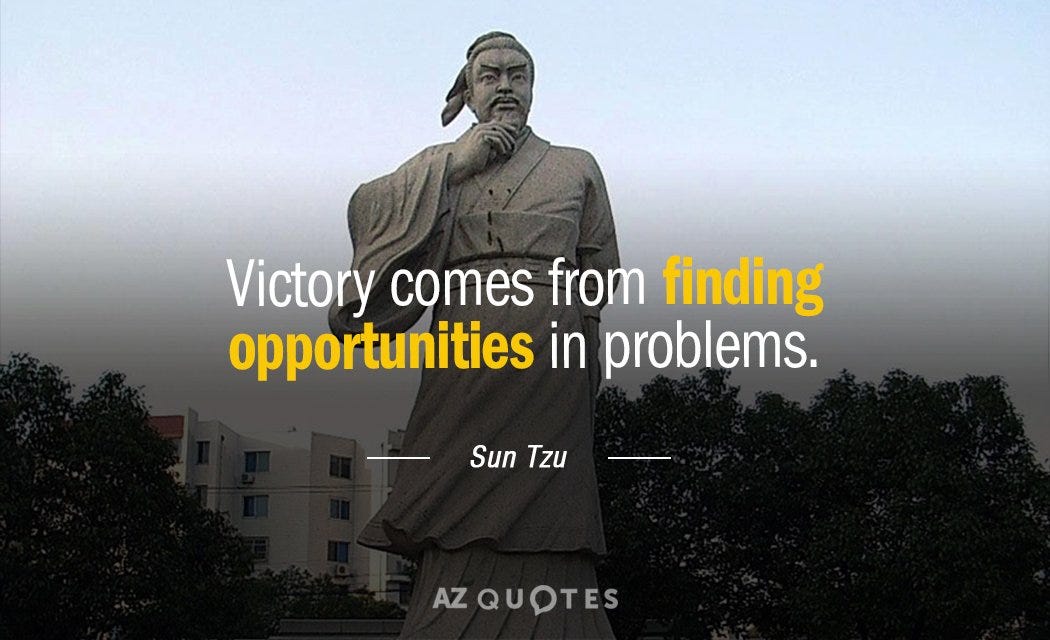

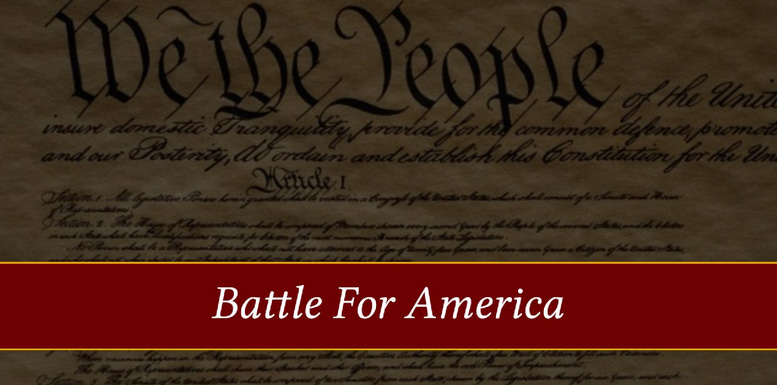
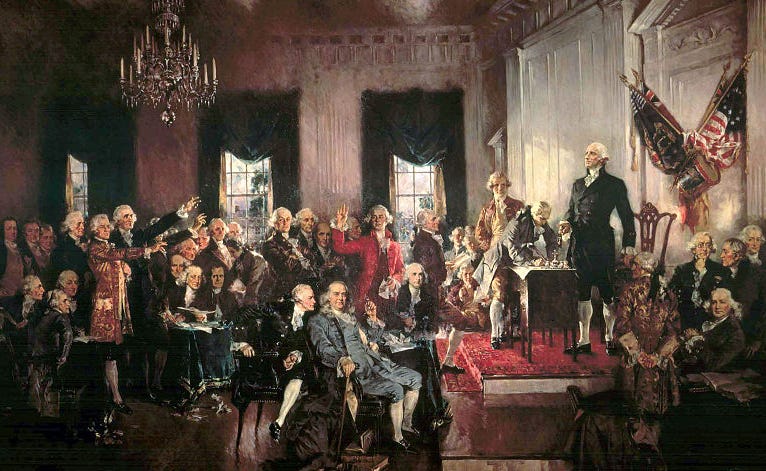

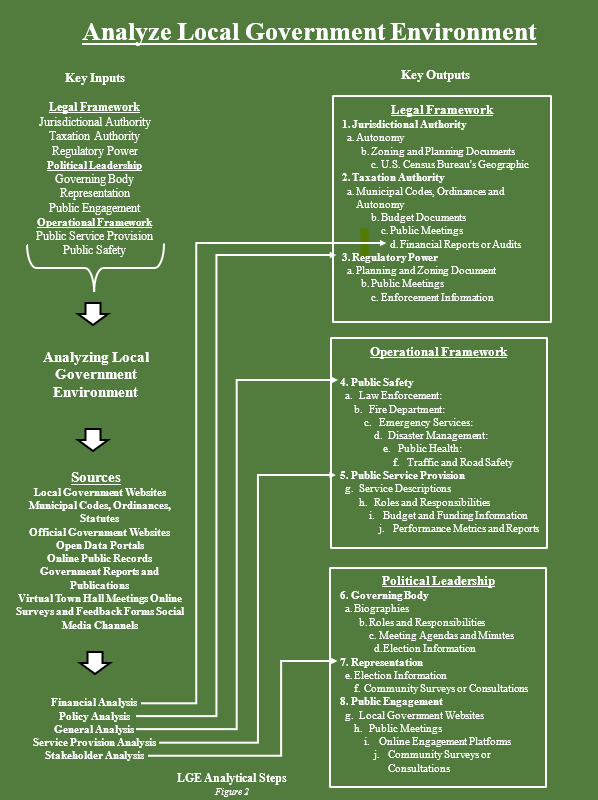
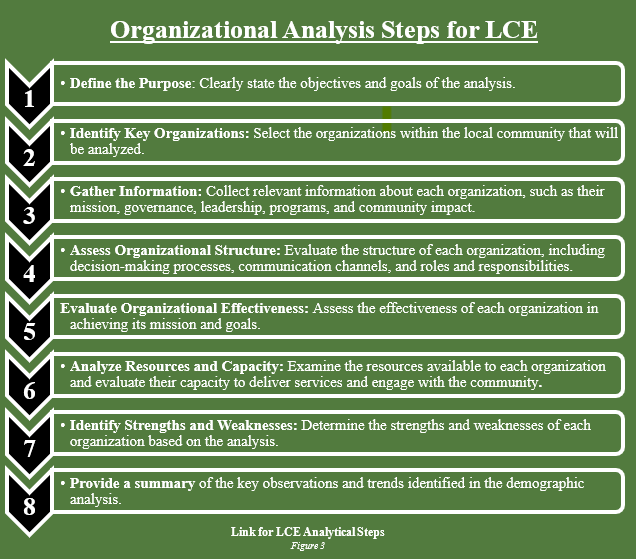
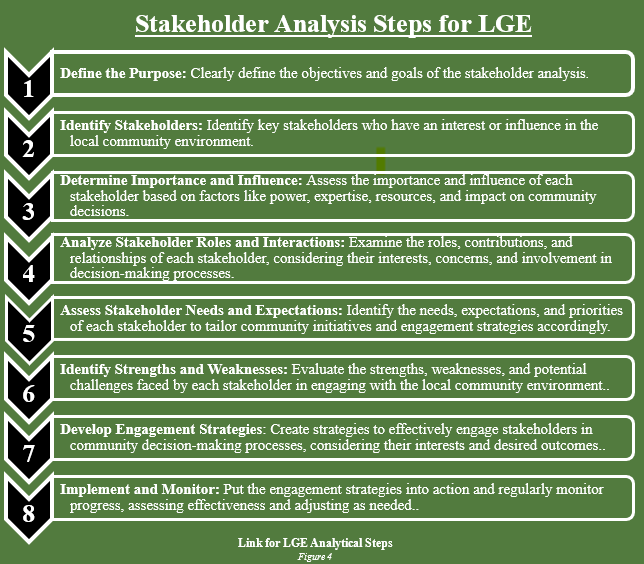




I'm as I type, watching my township Board meeting as I am part of a handful of residents holding their local government's feet to the fire. Been involved for almost 4 years thanks to "learning how to play the game". It's slow work but we have had several good size wins AND we are from all political backgrounds. They just don't know how MAGA I am as I don't react to their small digs. Again, because I've learned to play the game. I had the opportunity to lead locally for a neighborhood win. I realized I needed to deep dive into how our local politics ran (democrat/independent) and started going to all of the meetings. Such an eye opening job! Who's making sure your local government is on the up and up?
"Our education has failed us all. We are no longer educated in how are government functions."
...that seems to be a typo?